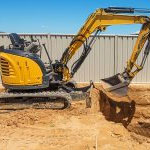
The Building Act 2004 (the Act) is one of the key legislations that manage natural hazards concerning major building alterations and new constructions. The purpose of the natural hazards requirements under the Act is to protect building work, land, or other property from the effects of natural hazards by placing limits on the granting of building consents for building work undertaken on land subject to one or more natural hazards.
The following are natural hazards under the Act:
Under this definition, geothermal events, volcanic events, and earthquakes are not regarded as natural hazards, and liquefaction is not a contemplated effect.
To view a copy of the Step-By-Step guide click here
The above list of factors is not exhaustive. Also, it is unlikely that a single factor will be determinative, and the weight given to each factor will depend on the circumstances in question.
To view the guidance released by Building performance click here